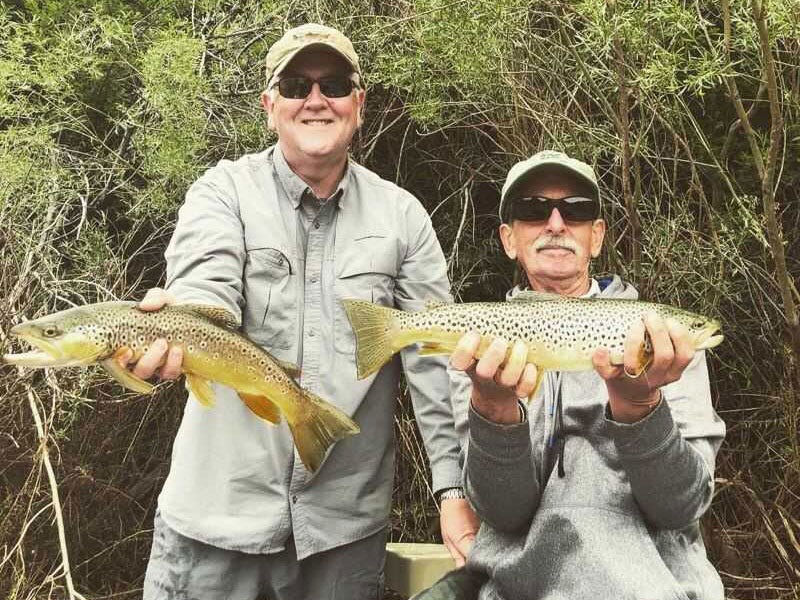Rising Water and Falling Trout


Last week, on the Missouri River, we had “Falling Water and Rising Fish.” This week, we’ve got the reverse. The water is rising and the trout are falling back to their higher water haunts, eating copious amounts of food, well below the surface. The good news is that boat anglers can keep on fishing and expect to catch good numbers of healthy fish. The bad news is that shore-bound anglers have limited options and the dry fly fanatics are having their dreams crushed right now.
It seems like we keep waiting and waiting for ideal conditions, but they remain just out of reach. In the meantime, there are still plenty of fish to catch. I’ve never seen the Mo in unfishable condition. I like to say you can always catch fish, just not always the way you’d like to. My favorite day starts with streamers, shifts to nymphing and finishes with dries. I like fishing all disciplines.
As long as the water stays high, the nymphing program remains the strongest option for the most consistent fishing. Any fishing style is better than no fishing, and if you are going to be locked into the nymphing game, you should focus on doing it well.
Scuds, Sows, and Worms
The best way to fish your scuds, sows and worms is deep. You want them on or near the bottom. They don’t emerge. They may get washed along for a while, but they are not trying to reach the surface to hatch. They prefer to stay along the bottom and this is typically where you will find your best success when fishing your imitations of these critters.
Mayflies and Caddis
Mayflies and caddis both drift and emerge daily. During emergency periods, the nymphs and pupa are swimming from the bottom to the top. Imitations of mayflies and caddis often fish best higher in the water column, especially in the middle of the day. When a big hatch is in progress, they often work best near the surface.
Where are the fish?
The fish like to hold where life is easy and where they can find plenty of food. The water may be high, but the insects are still hatching from the same locations, be they in the middle of the river or along the edges of the normal river channel. The key to finding the best fishing lanes is to break down where the best food conveyance zones are forming. The first turn after a big flat full of hatching PMD’s is likely to be a winner.
The most challenging part of nymphing is hunting the unseen. You’ve got to use your imagination to find the pods of fish eating under the surface. Finding fish eating dries is easy. Finding fish eating nymphs requires deeper thinking.
